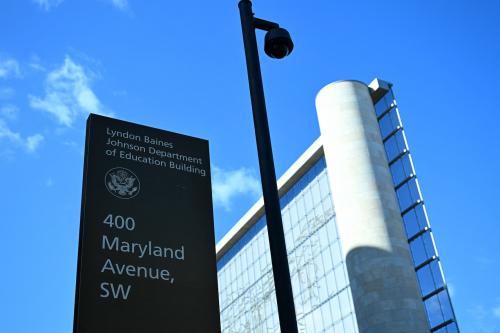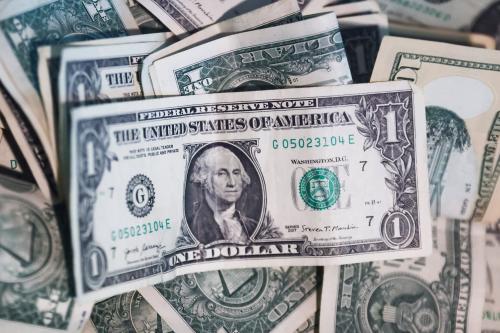This piece originally appeared in Democracy: A Journal of Ideas.
If Hillary Clinton had been elected President, assessing Barack Obama’s legacy would be a straightforward task. Mrs. Clinton would have treated his principal legislative and administrative accomplishments as a baseline for future policy. Time would have woven them into the fabric of American life, making their reversal all the more unlikely.
The Policy Legacy
As matters now stand, however, much of what Mr. Obama has done is reversible. A stroke of Donald Trump’s pen will expunge any presidential executive order with which he disagrees, including Obama’s expansive use of his power to shape the enforcement of immigration laws. Policies based on controversial interpretations of legislative language can be stopped in their tracks. And with majorities in both houses of Congress, Republican leaders can use parliamentary devices such as budget reconciliation to repeal Obama-era legislation without a single Democratic vote—if they can hold their own members together. In short, Obama’s policy legacy depends to a significant extent on what President Trump and the Republicans choose to do.
But not entirely. In early 2009, the Obama Administration made a series of controversial decisions that may well have saved the United States and the world from a second Great Depression. Republicans loathed the stimulus bill; many Democrats thought it was small and timid. But it bolstered consumer purchasing power and boosted growth when it was most necessary while muting the worst effects of the slump for poor and near-poor Americans.
The auto bailout was another key decision made under intense pressure. Had the Administration not acted, most U.S. automakers would have been forced into bankruptcy—a course many Republicans favored—with effects that would have rippled throughout the industry’s supply chain, threatening between two and three million jobs overall. The Midwest’s economy was already in a tailspin, and the loss of so many jobs would have done massive, irreversible damage. Instead, auto manufacturers were given the breathing space they needed to survive, and the ensuing recovery has produced some of the best years in the industry’s century-long history.
Finally, and most controversially, the Administration propped up the banking and financial system. Many Republicans opposed any federal bailout, a stance that almost killed the TARP bill in the waning months of the George W. Bush Administration; many Democrats advocated nationalizing the banks outright. Rejecting both courses, Mr. Obama and his Treasury Secretary, Timothy Geithner, opted for a blend of loans to major financial institutions coupled with so-called stress tests to determine whether these institutions had enough high-quality capital to survive additional pressure.
Citing the need to preserve confidence in the financial system, the Administration refrained from prosecuting bank officials and even from demanding their resignation in exchange for public assistance. We will never know whether exigent circumstances required this decision, which continues to infuriate progressives. All we know is that we now have a stronger, more resilient financial system than we did a decade ago.
Taken together, these policies helped avert outright disaster, an achievement for which Obama receives far too little credit but which the new Administration cannot undo. It is a legacy that all Americans should celebrate, even though few do, because it is easy to overlook, or take for granted, events that do not occur.
The principal legislative accomplishments of Obama’s first two years—Obamacare and the Dodd-Frank bill—stand on less secure ground. It seems inevitable that Republicans will move quickly to repeal the President’s signature health-care legislation, even if they are not ready to agree on a replacement. It seems likely, however, that some of Obamacare’s most popular features will be retained. Trump has singled out two—continued insurance coverage for young adults under their parents’ policies, and protection against being denied insurance because of pre-existing health conditions. As the discussion proceeds within the Republican Party, more elements of continuity are likely to emerge for the simple reason that many of the popular features of Obamacare cannot work without other features that critics reject. That said, it is hard to see how key features of the law, such as the expansion of Medicaid to cover ten million additional Americans, can survive a determined Republican effort to reduce the program’s scope and cost.
For somewhat different reasons, the fate of Dodd-Frank is also in doubt. This massive and complex legislation, which runs to some 2,300 pages, set in motion nearly 400 separate rule-making processes, many of which have yet to reach the finish line. The incoming Trump Administration can bring this activity to an abrupt halt, stalling implementation of many of the act’s provisions. In the longer run, the Administration’s deregulatory zeal—an article of faith for many of Trump’s appointees—will spark efforts to undo even completed regulations. Although this is a complex and cumbersome process, steady pressure from the financial sector will bolster it, and some Senate Democrats up for re-election in 2018 will not resist it as full-throatedly as they might have under more favorable circumstances. On the legislative front, expect a push to relieve pressure from community banks and to rein in the independence of the Consumer Financial Protection Bureau. Dodd-Frank won’t be repealed outright, but it will be weakened significantly. What survives will be less than the revolution in financial regulation that the Obama Administration and congressional Democrats sought to achieve.
With the support of the President and the Justice Department, same-sex marriage is now the law of the land, and public opinion is likely to sustain it, whatever the changes on the composition of the Supreme Court.
With the support of the President and the Justice Department, same-sex marriage is now the law of the land, and public opinion is likely to sustain it, whatever the changes on the composition of the Supreme Court. But the Administration’s other major social policy initiatives are far less secure. There is no reason to expect that President Trump’s Justice and Education departments will emulate Obama’s expansive interpretation of civil rights laws. It remains to be seen whether the new Administration will continue the federal government’s current forbearance toward state laws decriminalizing and in some cases legalizing marijuana distribution and use. Pressure on localities to change police tactics minority communities view as disrespectful and dangerous is likely to be relaxed.
The Obama Administration’s intense focus on climate change eventually yielded the Paris Agreement, from which President Trump has vowed to withdraw. Now that the agreement has gone into force, the withdrawal process would take four years. But the new President could reduce this period by announcing the United States’ withdrawal from the UN Framework Convention on Climate Change adopted by President George H. W. Bush in 1992. Given Trump’s criticism of the UNFCC during his presidential campaign, this move seems likely, despite its diplomatic costs. And he could weaken the Obama Administration’s main vehicle for meeting its Paris obligation—the Clean Power Plan—by declining to defend it in federal court, where it is now under legal challenge. Given the Trump campaign’s almost theological dedication to coal, which the Clean Power Plan attacks, he seems likely to take this step as part of his Administration’s overall effort to boost fossil fuel production and use. On climate change, the United States could move swiftly from global leader to global pariah.
Two larger shortcomings shaped Obama’s policy legacy. His agenda choices during his first two years, when he enjoyed unified government, were questionable at best. After an initial surge of economic measures, the President and congressional Democrats shifted their focus to energy and health care. The push for cap-and-trade legislation failed completely. And although Obamacare succeeded by the narrowest of margins, the victory came at enormous political cost. Since its passage, the law has never enjoyed majority support; it intensified partisan polarization. And the protracted struggle for its enactment consumed time and energy that might have been devoted to an expanded economic agenda. In part as a result, the Administration did too little to buffer hard-pressed homeowners against foreclosure, and key campaign promises such as an infrastructure bank, which could have yielded a steady stream of good jobs, were left to languish.
Along with questionable agenda choices came Mr. Obama’s failure to learn a key lesson from Franklin Roosevelt’s presidency: To be sustainable, policies must be constructed with one eye firmly trained on politics. In a memorandum, an outside advisor, the public administration expert Luther Gulick, tells of a discussion he had with FDR, during which he questioned the economic rationale for payroll taxes as the funding base for Social Security. The President replied, “I guess you’re right on the economics. . . . We put those payroll contributions there so as to give the contributors a legal, moral, and political right to collect their pensions and their unemployment benefits. With those taxes in there, no damn politician can ever scrap my social security program. Those taxes aren’t a matter of economics, they’re straight politics.” One wonders what might have been different if President Obama and his advisors had paid more attention to the politics of policy structures.
The Political Legacy
If President Obama’s policy legacy is in doubt, his political legacy is not. The coalition that elected him twice turned out to be as much personal as structural. Despite his strenuous efforts, he was unable to transfer enough of the support he enjoyed from minorities, young adults, and even the white working class outside the South to elect his chosen successor.
Hillary Clinton’s narrow loss exposed a basic reality—the pervasive weakening of the Democratic Party during the eight Obama years, in part because the party machinery stepped away from its party-building mission. Democratic majorities in the House and Senate have disappeared and seem unlikely to return until at least 2020. Republicans have seized control of governorships and state legislatures across the country. Numerically, the party is at its lowest ebb since the 1920s.
The problem is distributional as well as numerical. Democratic voters are crammed into super-majority congressional districts and—as the 2016 presidential election demonstrated—into super-majority states as well. Hillary Clinton’s popular vote margin in California alone—4.3 million—exceeded her national margin by 1.4 million votes. By contrast, Donald Trump’s best state (Texas) produced a popular vote margin of only 800,000. The five bluest states yielded a popular vote edge of 8.5 million, compared to only 3.1 million for the five reddest states. Unless Democrats can regain lost ground in the country’s interior and outside big cities, their popular vote weight will exceed their political punch.
Obama’s presidency did not make this task any easier. His agenda—heavy on technology and climate change and civil rights, light on concrete measures to boost working- and middle-class incomes—appealed much more to coastal elites than to the rest of the country. Despite his intentions, his economic policies left vast stretches of the country behind, and his technocratic instincts did nothing to quell the ensuing populist tide. Nor did his demeanor. For many Americans, his vaunted calm composure bespoke detachment, even indifference to their struggles—too much Spock, not enough Dr. McCoy.
Measured against his own aspirations, Obama’s biggest failure was his inability to redeem the promise of his breakout speech to the 2004 Democratic Convention.
Measured against his own aspirations, Obama’s biggest failure was his inability to redeem the promise of his breakout speech to the 2004 Democratic Convention.On his watch, Red America got redder, Blue American bluer, and One America receded over the horizon. In the face of organized Republican resistance, perhaps no Democratic President could have done any better. Still, the intensified partisan polarization is disappointing, as Obama himself has acknowledged.
The Personal Legacy
A third dimension of Barack Obama’s legacy—his personal conduct as President—is beyond the reach of his adversaries, and historians are likely to give it high marks. Though not immune to pique and pettiness, he was almost always a model of dignity and restraint. He did his best to honor the constraints of logic and evidence, and his public utterances typically were cogent and reflective. He ran a scandal-free White House, which is much more difficult than it sounds. He was a devoted father and husband who, in partnership with his wife, gave his daughters a chance to grow up as normally as children can in the White House. He set and met a high standard for family life—not just for public officials, but for everyone. And Michelle Obama was an exemplary First Lady, whose combination of passion and common sense made her even more popular than her husband by the end of his Administration.
I have left the obvious for last. As the nation’s first African-American President, Barack Obama labored under a unique burden. He knew he would be judged not only as a President, but also as the representative of a people who had waged an epic struggle for freedom, equality, and respect. He discharged this burden so well that, despite the lingering racism that disfigured the 2016 presidential campaign, he normalized the idea of African-American leadership at the highest levels of government. Whatever else is eroded by time or undone by his enemies, this achievement will endure as long as the republic. And for this, Americans will forever be in President Obama’s debt.
The Brookings Institution is committed to quality, independence, and impact.
We are supported by a diverse array of funders. In line with our values and policies, each Brookings publication represents the sole views of its author(s).






Commentary
Op-edObama’s uncertain legacy
January 17, 2017